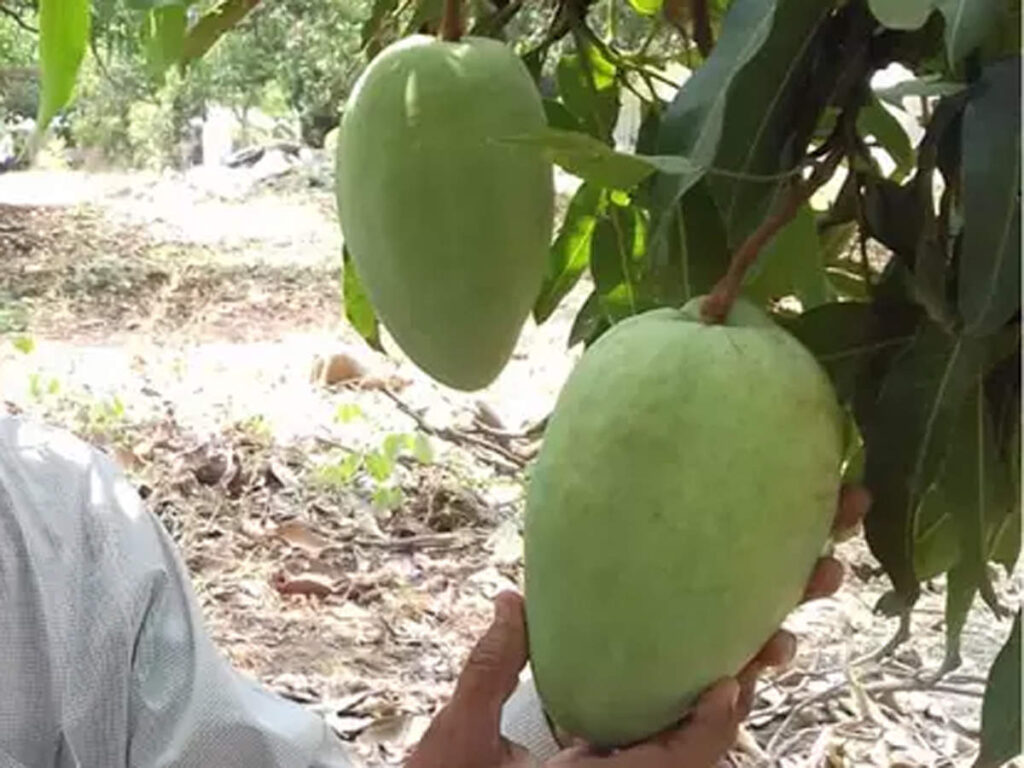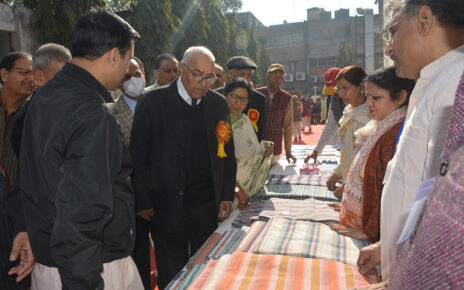Japanese Miyazaki mangoes are among the most expensive in the world and sold at ₹2.70 lakh per kilogram in the international market last year, according to the Japanese media reports.
These fruits are so valuable that a couple in Madhya Pradesh’s Jabalpur have employed four guards and six dogs in their orchard to guard the rare trees. Orchardist couple Rani and Sankalp Parihar planted two saplings years back thinking that they will grow like other trees. The saplings developed and bore unusual ruby-coloured mangoes and to the couple’s pleasant surprise, they turned out to be Japanese Miyazaki.
Parihar said thieves last year broke into their orchard and stole the fruit after it became locally known that they have started growing this rare variety. Thereafter, they employed guards and dogs to guard the trees, which are rarely grown in India and are also known as an egg of the sun.
Rani said that mango cultivators and fruit lovers were contacting them and a businessman had offered ₹21,000 for one piece. “…a jeweller from Mumbai is ready to pay whatever price we quote. But I have clearly said that we will not sell it to anyone. We will use the fruits to grow more plants,” she said.
Another variety, the ‘Noorjahan’ mango, cultivated in Madhya Pradesh’s Alirajpur district, is priced at Rs 500 to Rs 1,000 apiece. Locals claim ‘Noorjahan’ are of Afghan origin and cultivated only in the Katthiwada region of Alirajpur district adjacent to the Gujarat border, approximately 250 km from Indore.

The ‘Noorjahan’ variety produces fruits towards the beginning of June. These trees start flowering in January- February. A ‘Noorjahan’ mango can grow up to a foot long and its kernels weigh between 150 to 200 grams, local cultivators claim. The curious thing is that this tree is rather small growing up to a maximum height of 12 feet and therefore it often needs support to bear the weight of its own fruit.
Kohitur: A mango for the royals
West Bengal’s Murshidabad district is the erstwhile seat of the nawabs of Bengal and its mangoes are no exception. The Kohitur variety, so delicate that each piece has to be carefully plucked by hand and swathed in cotton, was developed in the late 18th century by the last nawab of Bengal, Siraj-ud-Daulah. They start rotting if they fall from trees or get damaged in handling.
The mango was out of bounds for commoners with only royal orchards permitted to grow it, and only royals allowed to relish it. The fruit now sells for up to Rs. 1,500 apiece.
Still out of reach for most, except for modern-day royals who have the means to spend, the West Bengal government is trying to save and popularise the Murshidabad nawab’s favourite fruit all over the world and get a geographical indication (GI) tag. The GI tag ensures that only those registered as authorised users are allowed to use the product name.
“Legend has that, Siraj ud-Daulah, a connoisseur of mangoes, had gathered saplings of the best mangoes from all over the country for his garden in Murshidabad. He had even appointed few of his favourite mango breeders who were treated like Akbar’s Navratnas to do research and cross breed between various mangoes to create new varieties. Kohitur was created at that time and it was his favourite,” Gautam Roy, Deputy Director of Horticulture, Murshidabad, stated.
The Kohitur is believed to have been created by a royal mango breeder called Hakim Ada Mohammadi, by cross breeding between a mango called Kalopahar and another variety, Roy said.
“It is so delicate that these mangoes need to be packed or kept separately wrapped in cotton. Legend has it that the nawabs kept the mangoes dipped in honey to preserve it and increase its shelf-life,” said Roy.
According to legend, Kohitur was not sliced by metal knives but bamboo knives to get the real flavour and taste. The nawabs would then use golden toothpicks to dig in delicately.




